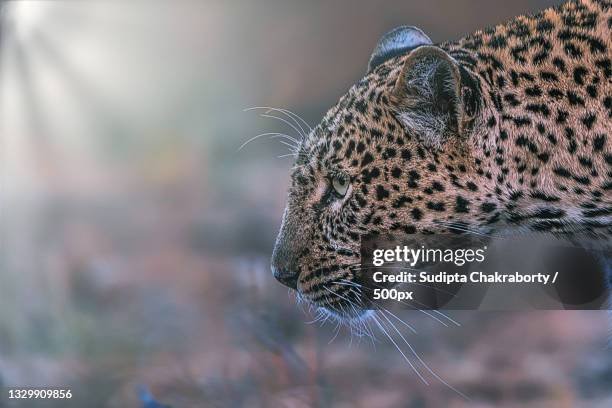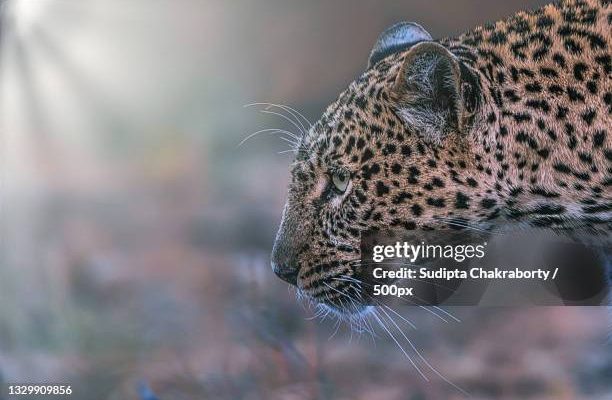
Imagine for a moment that you’re in a cozy café, sipping your favorite drink as you dive into the fascinating world of these big cats. The African leopard is not just any cat; it has an evolutionary history that interweaves with the rise and fall of other species, environmental shifts, and even human impact. Understanding where these incredible animals come from can deepen our appreciation for them and the ecosystems they inhabit.
The Origins of the Leopard
The leopard (Panthera pardus) belongs to the Felidae family, which includes other big cats like lions, tigers, and jaguars. Its ancestry can be traced back to around 4-5 million years ago, when early felids began diverging from their ancestors to form separate species. The leopard’s lineage split from its closest relative, the jaguar, during this evolutionary dance, leading to distinct adaptations suited for their environments.
Interestingly, leopards are thought to have originated in Africa, and their range once extended across the continent and even into Asia and parts of Europe. This wide distribution allowed them to adapt to various habitats—from dense forests to open savannahs—showing just how versatile these creatures can be. The ability to thrive in diverse environments is a huge part of their evolutionary success.
As climate changes occurred over millennia, leopards were able to migrate and adapt. During periods of glaciation, for example, they may have retreated to warmer regions, carrying with them the genetic diversity that would shape future populations. This adaptability is a hallmark of leopards—traits that have allowed them to thrive despite shifting landscapes.
The Evolutionary Journey of the Leopard
Leopards evolved several key traits that have helped them become successful predators. Their characteristic spotted coats, for example, provide excellent camouflage among the dappled light of the savannah and tree cover. This adaptation not only helps them stalk prey but also offers protection from larger predators.
Over time, leopards developed incredible physical prowess. They are stealthy climbers, thanks to their muscular build and retractable claws. Their powerful jaws and sharp teeth are designed for grabbing and holding onto prey—even in challenging situations. This evolutionary toolkit makes them one of the most versatile hunters in Africa.
You might be wondering how leopards fit into their ecosystems. They are crucial for maintaining the balance between herbivores and vegetation. By preying on animals like antelope and rodents, leopards help control populations, ensuring that there’s enough food for all species. Without predators like leopards, ecosystems could become imbalanced, leading to overgrazing and loss of biodiversity.
A fascinating aspect of the leopard’s evolutionary history is its genetic diversity. Throughout the ages, different populations of leopards have adapted to unique local conditions. For example, the Persian leopard and the Indian leopard show variations in fur patterns and size based on environmental factors and available prey.
This genetic diversity is critical for the survival of the species. Different traits may be more advantageous in varying habitats, allowing leopards to thrive in a wide range of environments. For instance, leopards in denser forests might be smaller and more agile, while those in open grasslands could be larger and more powerful.
Sadly, habitat loss and poaching threaten this diversity today. As human populations grow and encroach on wild spaces, leopards face new challenges. Conservation efforts play a vital role in preserving not only leopards but also the rich genetic tapestry that allows them to adapt and thrive in changing circumstances.
The Influence of Human Activity
The relationship between humans and leopards has always been complex. Historically, leopards were revered in various cultures, symbolizing strength and grace. Yet, as human settlements expanded, the picture grew darker. Hunting and habitat destruction have significantly impacted leopard populations.
As agriculture expanded, leopards often found themselves in conflict with farmers. Livestock predation led to retaliatory killings, which, unfortunately, eroded local populations. Here’s the thing: understanding the balance between human needs and wildlife conservation is essential if we are to protect these incredible animals.
Conservation programs today are focused on coexistence strategies. By educating communities and providing support when conflict arises, we can help save leopards and ensure their place in the wild. Emphasizing the ecological importance of leopards can change perceptions and promote conservation efforts.
So, what does the future hold for the African leopard? That’s a question many conservationists are tackling. While their adaptability has served them well through history, changes in climate and habitat loss present new challenges.
Conservation initiatives are focusing on connecting fragmented habitats to maintain genetic diversity and encourage population growth. Protected areas, wildlife corridors, and community engagement are all part of the strategy to ensure leopards can roam freely and adapt to future changes.
In addition, advancing technology—like camera traps and GPS tracking—helps researchers monitor populations and understand their movements. This data is invaluable for implementing effective conservation strategies.
Ultimately, the survival of the African leopard depends on a collective effort. By recognizing their role in the ecosystem and the challenges they face, we can take meaningful steps to protect these majestic creatures.
The evolution of the African leopard is a testament to the power of adaptability and resilience. From their ancient beginnings to the complex ecosystems they inhabit today, leopards have a rich history that deserves our attention and respect. As we continue to learn more about these incredible cats, it’s essential to reflect on our role in their survival.
Our relationship with the natural world is interconnected. By taking steps to protect the African leopard and its habitat, we are also protecting the diversity and balance of the ecosystems they contribute to. It’s a story that highlights the importance of conservation and the impact we can have when we come together for a shared cause. So, the next time you think about leopards, remember their incredible journey and consider how each of us can play a part in preserving their legacy for future generations.

